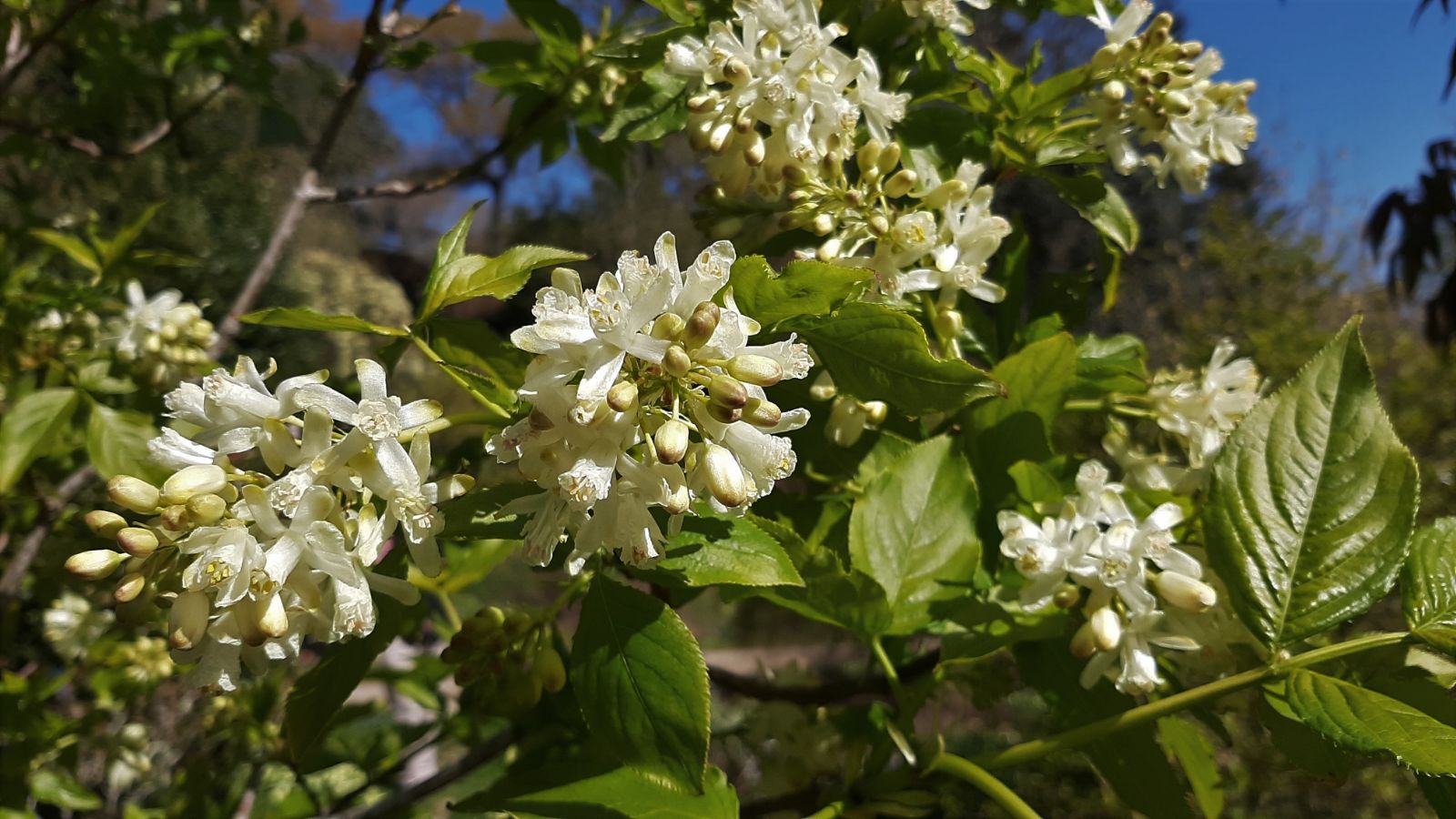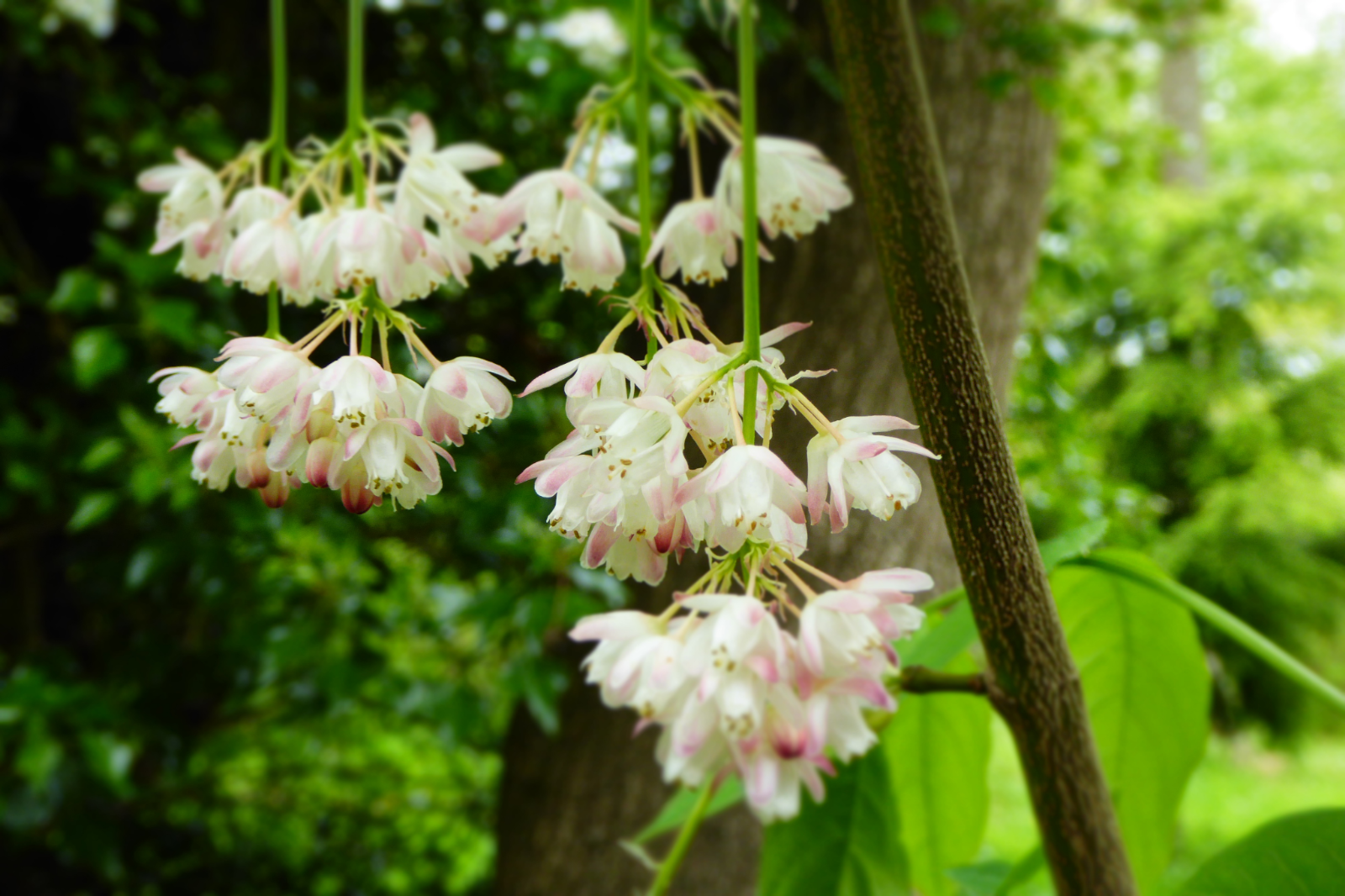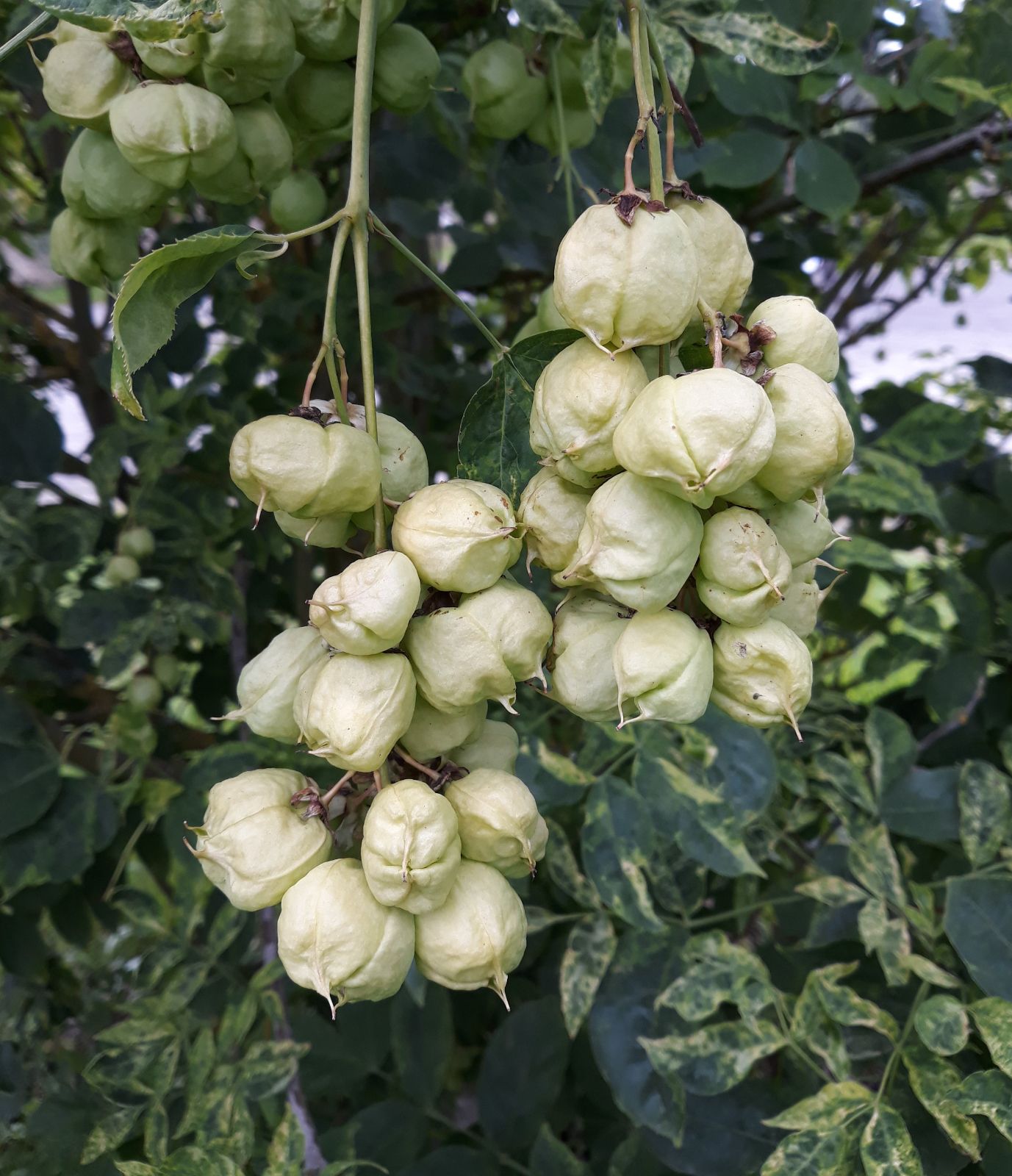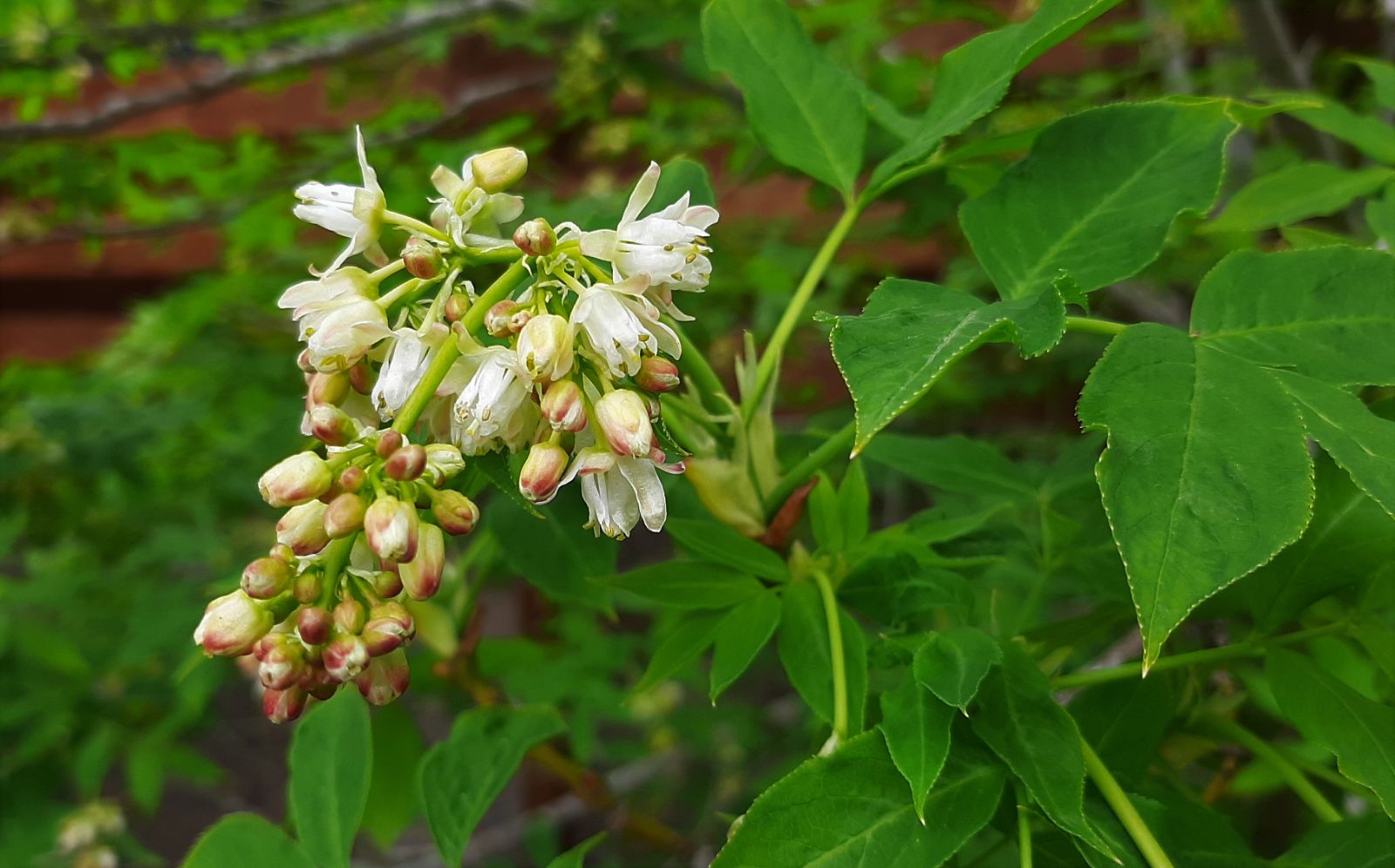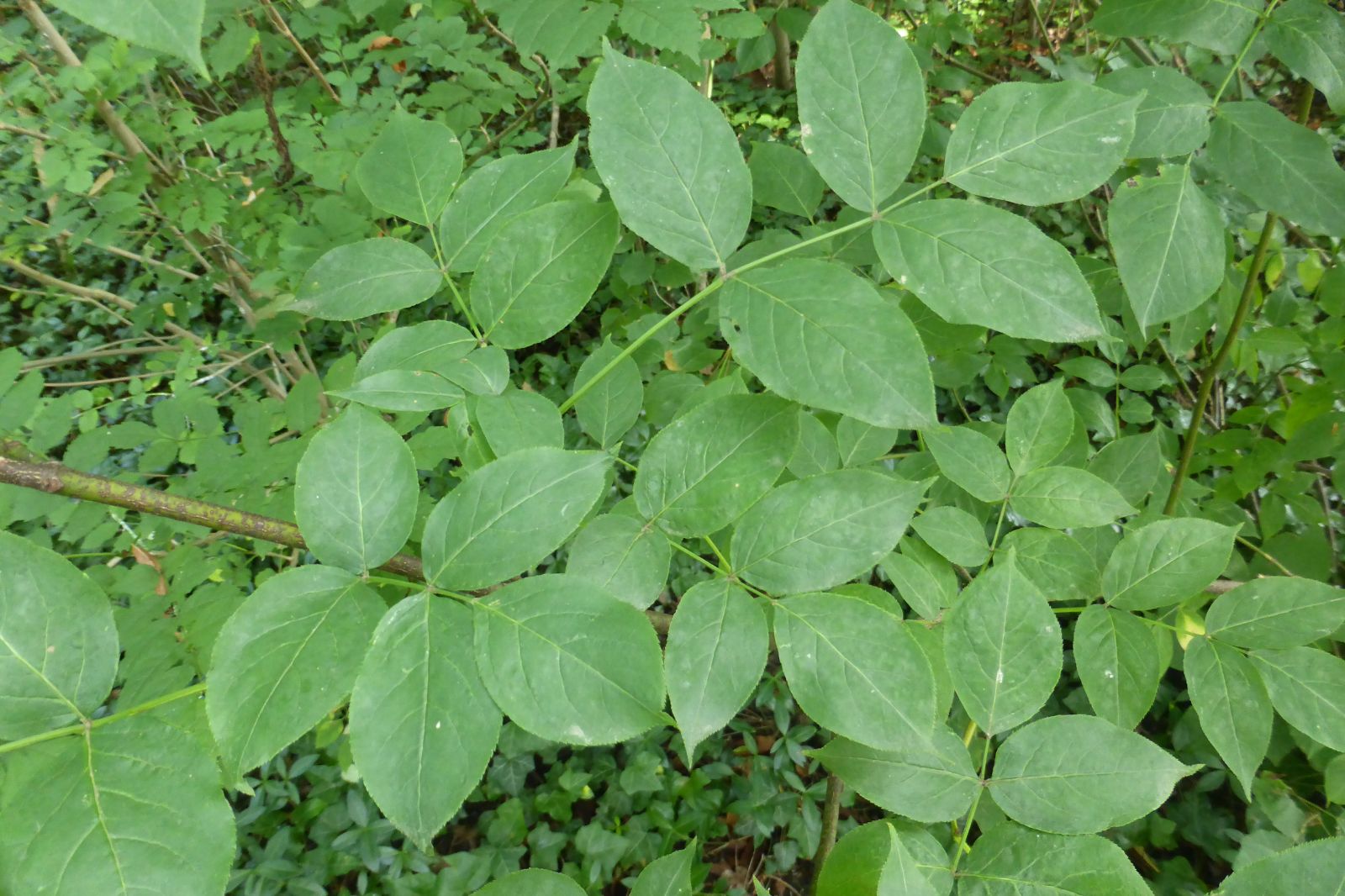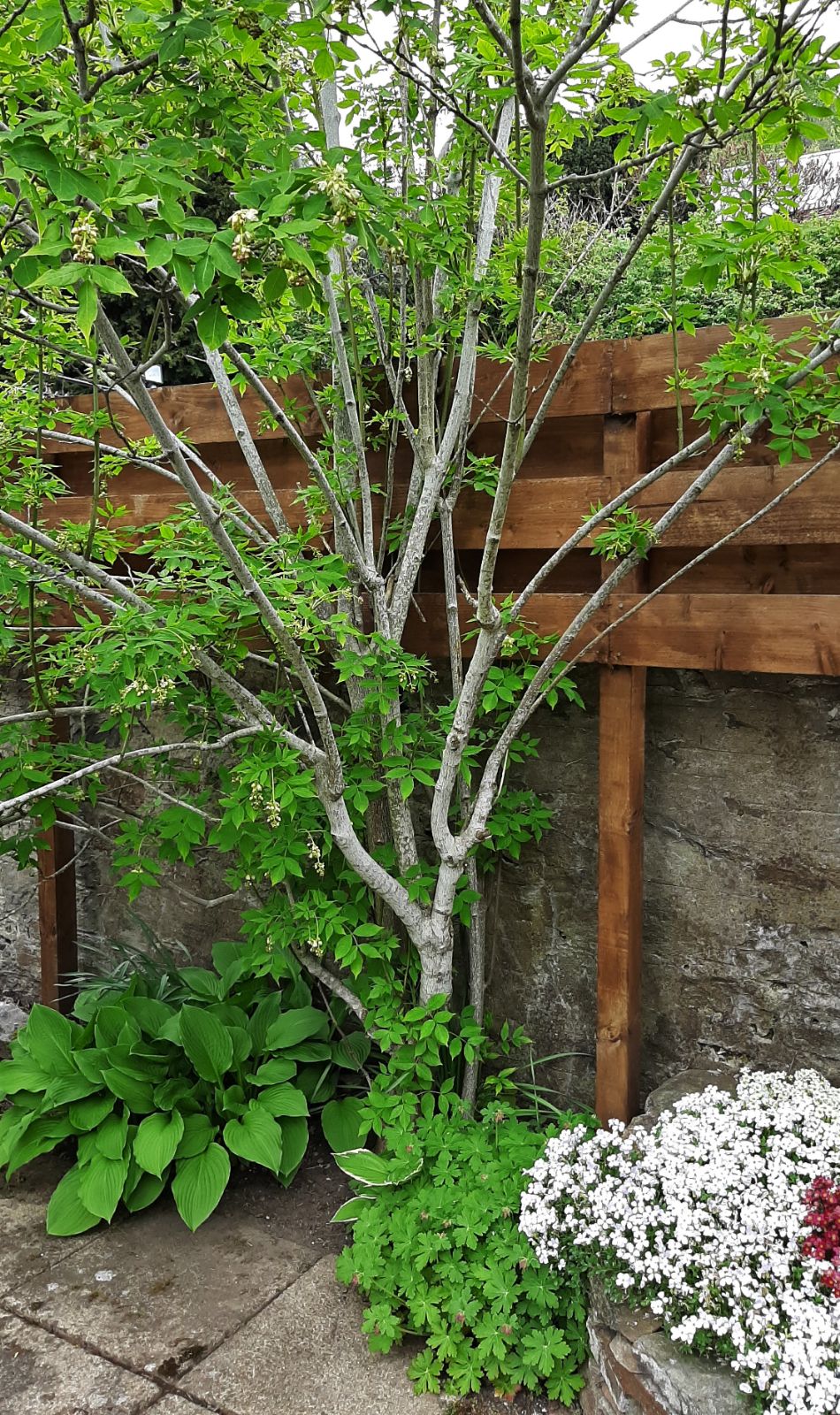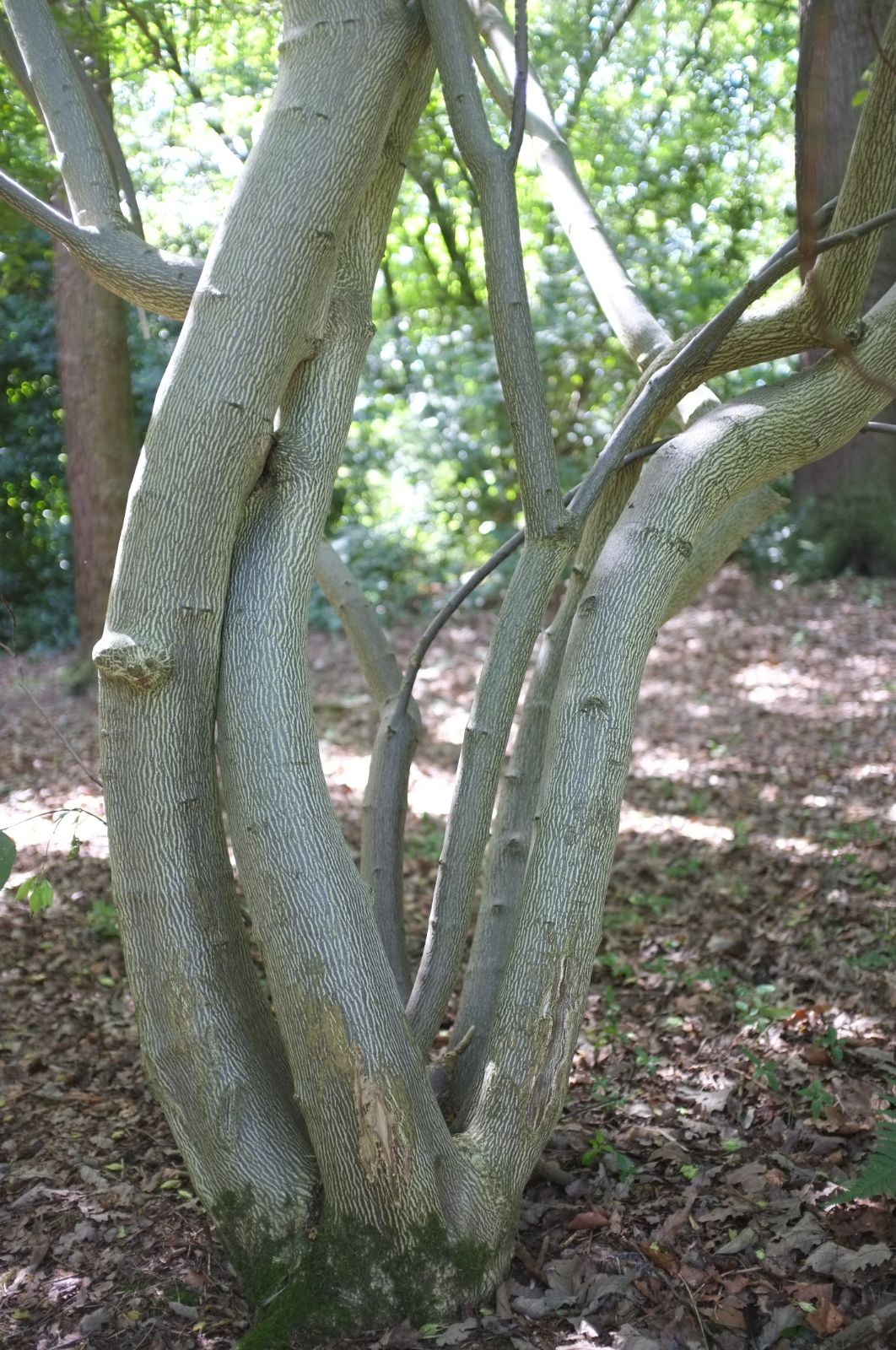Staphylea pinnata
Sponsor
Kindly sponsored by
Giles Coode-Adams
Credits
John Grimshaw (2018)
Recommended citation
Grimshaw, J. (2018), 'Staphylea pinnata' from the website Trees and Shrubs Online (treesandshrubsonline.
Genus
Common Names
- European Bladdernut
Shrub, 2–5 m tall, with erect stems, suckering to form a large plant. Leaves with (3–)5(–7) leaflets,; dull green above, pale and dull beneath, pubescent on the midrib at the base below; leaflets 5–10 cm, ovate or ovate-oblong, margin toothed. Inflorescence a terminal drooping panicle, 5–10 cm long. Flowers c. 10 mm, with calyx and petals erect, forming a narrow tube; sepals greenish, tinged reddish at the apex, petals white. Capsule 2.5–3.5 cm, with 2(–3) locules, rounded in outline with short points. Seeds 1 cm, yellow-brown. (Cullen et al. 2011; Stace 1997).
Distribution Native of Europe from S.E. France and Italy eastward to the western Ukraine and the Balkans; and of parts of S.W. Asia (Anatolia, Transcaucasia and bordering parts of Syria).
Conservation status Least concern (LC)
The European Bladdernut has been cultivated in Britain for its curious fruits and striking foliage since the Sixteenth Century. It was familiar to John Gerard (1597), and is still occasionally naturalized here (Stace 1997), though as Stace observes, it is now usually supplanted in gardens by other species. Gerard’s successor, John Parkinson (1629), described the flowers as ‘resembling a small daffodil’, which aptly describes the trumpet-like tube of petals surrounded by the calyx in this and several other species. Although surpassed in garden merit by S. colchica and S. holocarpa it is not unattractive in foliage, flower or fruit and remains freely available in the nursery trade. In sun the bladders can become red-tinged.

